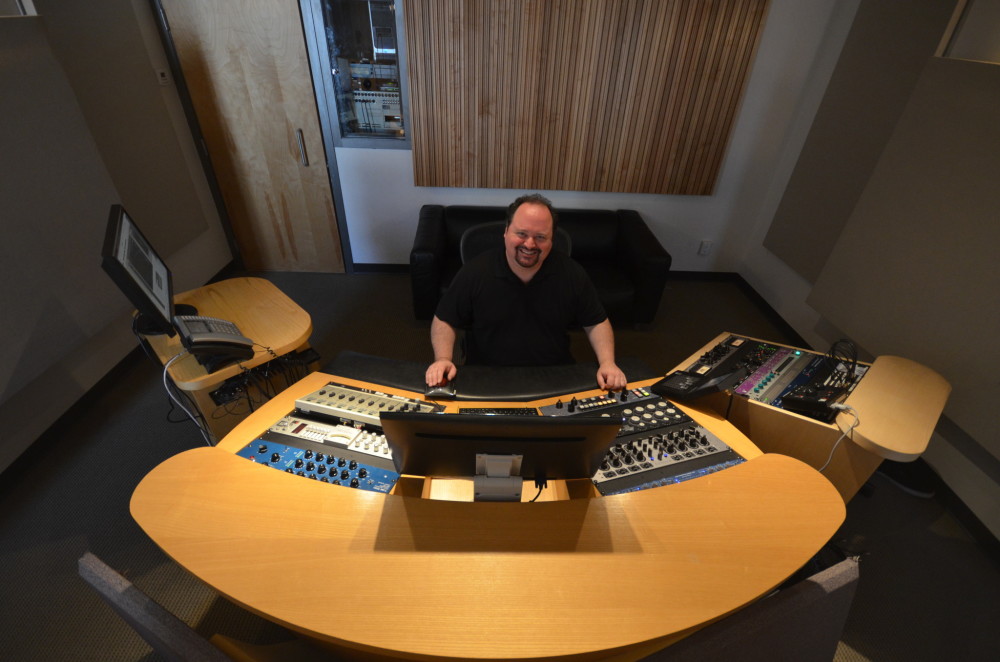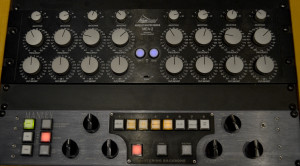Mastering Analysis: How Andy VanDette Mastered “Not Today” by Sevendust
An all analog signal path: It’s not just for tracking.
All-Pro Mastering engineer Andy VanDette (Beastie Boys Rush) got the rare opportunity to ditch the digital for “Not Today” by Sevendust. A tense driver from the new album Kill the Flaw by the Georgia metal innovators, “Not Today” suited itself well to a purely analog approach by VanDette in his suite at NYC’s Engine Room Audio — part of a signal path that earned this track a GRAMMY nomination for “Best Metal Performance” at the 58th annual awards.
What made VanDette skip the bits and bytes, and instead reach for just a few choice pieces of analog hardware? Why did the mighty Tube-Tech SMC-2B Multiband Opto Compressor play heavily into his strategy? And how does blind testing guide his ears at every turn?
Get some sonic clues from this masterful mastering engineer, inspired by a seriously shredding track.
Mastering Engineer Name: Andy VanDette
The Facility: Engine Room Audio, near Wall Street in Manhattan NYC, http://www.engineroomaudio.com and http://www.andyvandette.com
Clients/Credits: RECENT Sevendust, Matthew Good, Devin Townsend Project, Devour The Day, Rush, Dream Theater, Brian Blade
CLASSIC Beastie Boys, David Bowie, Uncle Kracker, Whitney Houston, Porcupine Tree
Artist and Song: Sevendust, “Not Today” from the album “Kill The Flaw”
Why They Mastered It With Me: I have worked with Mike Ferretti at Architekt Studios on a few projects now. We seem to be a good fit. We worked together on the last Sevendust release Time Travelers & Bonfires (2014) I guess I didn’t screw it up too badly. When they talked about a new studio album I jumped at the chance to master it.
Components: I received stereo soundfiles. Mike’s mixes and organization are always on point. I don’t usually feel I need stems. With fast internet connections available, I like to let engineers refine their own creations. They feel more involved, and learn how to give me what I want, on future projects.
First Listen: We started with a couple rough mixes. On first listen the only thing I requested was a little DeEssing, which Mike had already decided to address in later mixes, on his own. It’s always good to find you are on the same page with the engineer.
Masterful! I ran the rough mixes through everything I could get my hands on-analog and digital. In the end, the “less is more” and “if it ain’t broke” philosophies prevailed in my blind tests.
I think it was the 5th signal path that I printed that ended up being used on the entire album. Mike’s mixes are so consistent I only needed to vary the amounts of each piece from track to track. I thought the mixes were already tastefully compressed. I just added some light DeEssing, and some low end thunder to work Engine Room Audio’s dual 15 inch subwoofers on their custom Griffin (Fran Manuela) monitors.
I ended up using the Manley Massive Passive in M/S mode from the Manley backbone console, a Prism Maseslec MEA-2 EQ and a Tube-Tech SMC-2B. I fed the console with a Forssell MADA 2a’s D/A, and recaptured with it’s A/D into a Sequoia workstation. Any kind of digital peak limiter I tried on these mixes sounded bad so I avoided them, using the “old school” technique of pushing the A/D harder.
Major Multiband: I don’t think of the Tube-Tech SMC-2B as a multiband compressor. For me it is a giant 3-band tone control. There is no “notching out” with this device. The bands are very broad and over lapping. I rarely use more than one band on it. Gain boosting through its tubes has a very nice color for Rock.
Some engineers use it on everything here. I try to remain impartial, and use what my ears like, in a blind shoot out against the other signal paths I am testing. Good level matching between examples is essential. Some tube devices add too much saturation – and the track “Not Today” has enough of an intended saturation effect on the vocals of the track. I like to keep things clean for mastering.

Back and Forth: We were lucky to have a little time listening to rough mixes, and make changes, but I really only had one comment about the DeEssing that Mike had already heard and addressed, pretty much.
The Finality of it All: I hadn’t used an all-analog signal path in a while. I continue to integrate plugins into my hybrid analog digital setup, when they win the blind tests that I do, at the start of every project I master. With my current setup I can quickly audition my 10 favorite compressors looking for the right combination or color and definition, BEFORE I add a single dB of EQ.
This project re-affirms my belief with a great mix, less IS more. A single dB of EQ is more audible on a good mix, than 3 or 4 dB on a bad mix.
Ear Education: I am a big fan of David Moulton and his Golden Ears ear training.
I used it way (way, way) back when I was his student at SUNY Fredonia’s Tonmeister studies program, before it was a commercially available product. When performing in session with client, it’s nice to know the frequency you are going after, rather than fishing around with frequency sweeps or spectral analyzers. It’s great to be able to pick out phase and other issues by ear
I listen to a few recordings in any new audio space I listen in, to voice the room:
Seal – “Kiss From a Rose.” It is just an awesome production from every angle. On the 1996 Grammy nomination CD I bought, they had to turn it down -4dB so it didn’t obliterate the other Grammy-nominated tracks. It has stood the test of time in my opinion.
Porcupine Tree – “Blackest Eyes.” Because Steven Wilson, Tim Palmer and Paul Northfield are friggin’ geniuses. This is the way records used to be made. Quality studios and engineering at every step. Not to mention great performances of great songs. I never get tired of it. I will always remember the first time I hit “Play” listening to the 1/2″ analog master and thinking, “This will be a good day of deciding what dB of EQ I will use on what equalizer.” I ended up using the classic Neumann OE-DUO, Sontec 430B, and NTP 179-120 chain — but that’s a story for a different interview?
- Andy VanDette

Please note: When you buy products through links on this page, we may earn an affiliate commission.











Danny Dunford
December 10, 2015 at 4:30 am (9 years ago)Thank You was nominated for the Grammy, not Not Today. But great article!